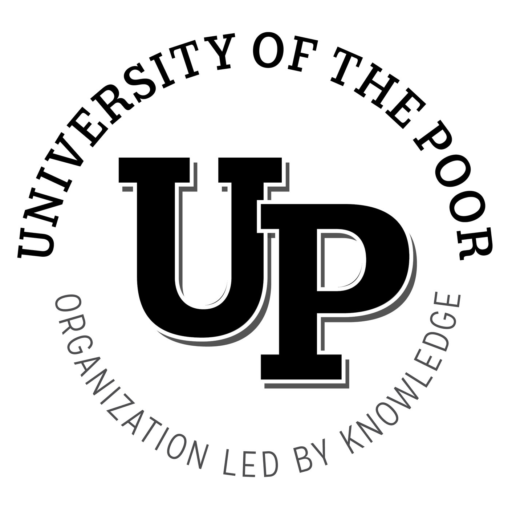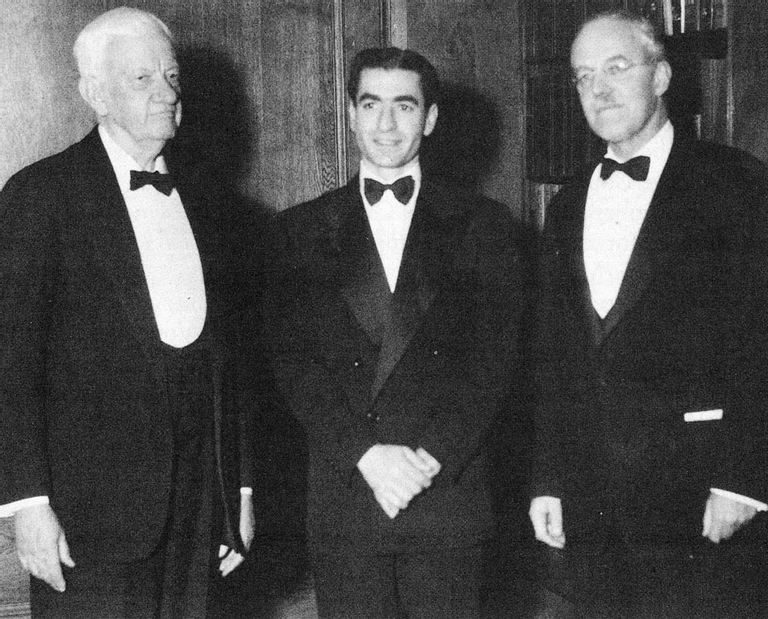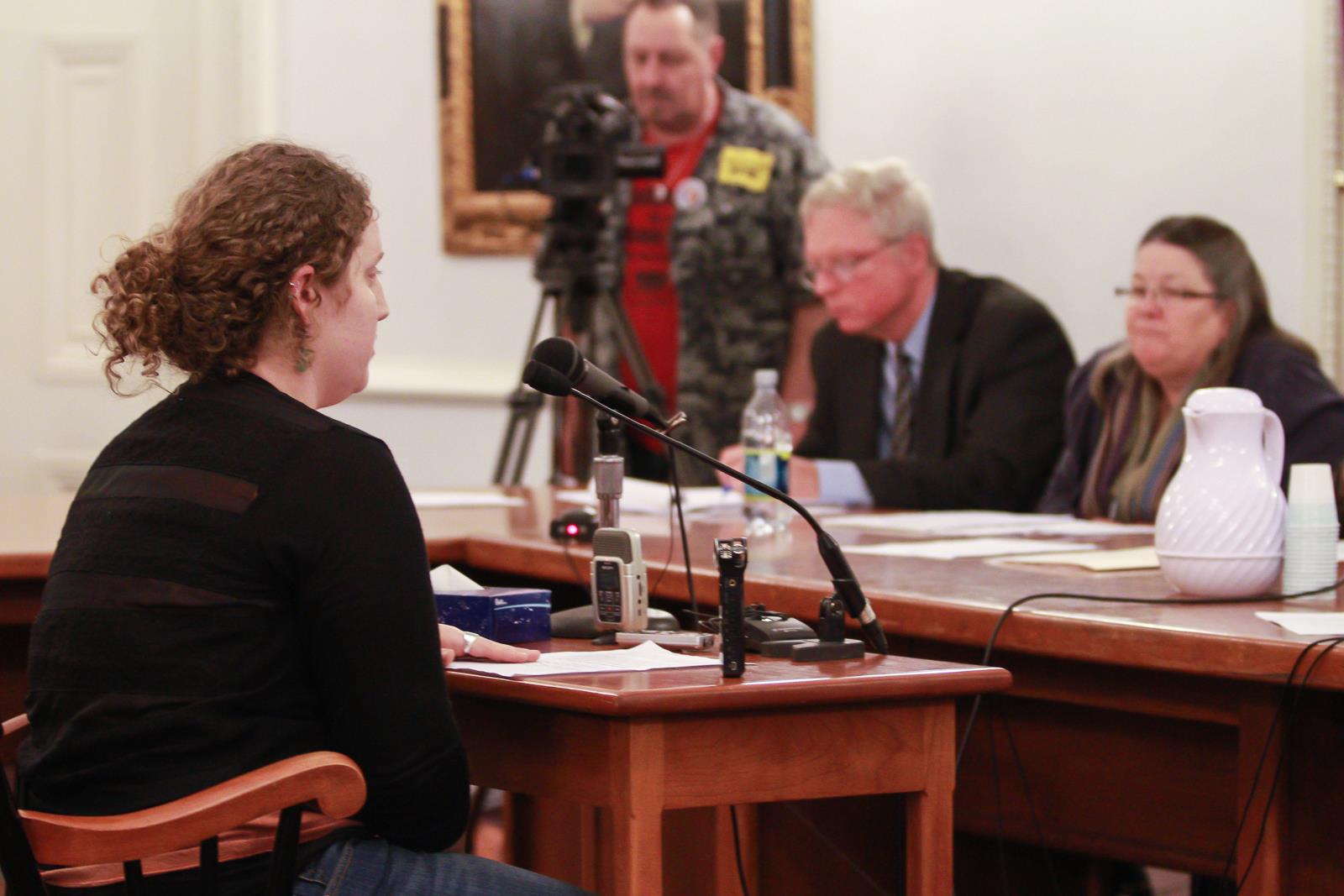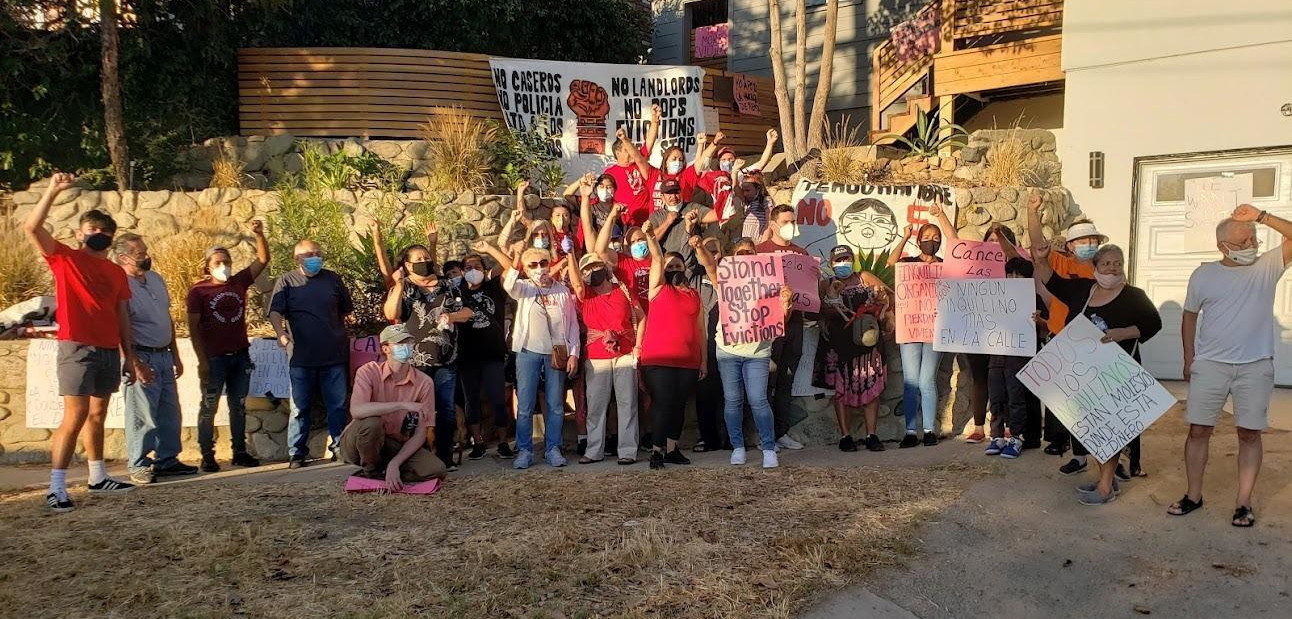by Bruce E. Parry
We strive to “make the struggle a school.” That school must teach us to know both the enemy we are fighting and our own class. Part of knowing the enemy – the capitalist class – is to know how the enemy has made the struggle a school for themselves. As you read this update of an article from 2018, think about how the capitalist class is organized and how its “central committee,” the Council on Foreign Relations (the CFR), adapts itself, its personnel and its propaganda apparatus to the struggle at hand. The CFR is a formidable enemy and we must be just as formidable.
The Capitalist School of Struggle
“If you know the enemy and know yourself, you need not fear the result of a hundred battles. If you know yourself but not the enemy, for every victory gained you will also suffer a defeat. If you know neither the enemy nor yourself, you will succumb in every battle.”
Sun Tzu, The Art of War
The University of the Poor seeks to identify and develop leaders of the poor and dispossessed in order to build the unity of that class. By dispossessed, we mean those who do not own private property: factories, plants, stores, banks, agribusiness, etc. All we own is personal property: cars, TVs, furniture, perhaps a house, etc. The poor – if you count everyone at or below twice the “official” poverty line – are about 48 percent (nearly half) of the population of the United States. Four out of five – 80 percent – of the population will experience poverty at some point in their lives. Those are the people we aim to unite.
Those who do own and operate big business – the factories, plants, big box stores, banks, agribusiness, etc. – make up the capitalist class.
The capitalist class is the most organized, educated, strategic and powerful class in history. It is well financed. The capitalists are completely organized. They have their own communications systems. They own all the factories, the plants, and all the businesses. They control all of the newspapers. They control all of the media. They control the federal government, the state government, and the local government. They control the military. They control the police. And this class is on the attack.
Warren Buffett, one of the world’s richest men, confirmed this assessment with surprising candor in a 2006 interview with the New York Times. “There’s class warfare, all right,” Mr. Buffett said, “but it’s my class, the rich class, that’s making war, and we’re winning.”
If we do not understand our class enemy, how they are organized and what their strengths and weaknesses are, we will lose. To lose against such an enemy – for this enemy is like a grizzly bear: big, mean and deadly – is very dangerous. Our job is to study the class enemy – the capitalist class – in order to defeat them.
Some of the questions that follow from this are straight forward. How is the class enemy organized? How do they rule? How are we ruled? The answer is the capitalists have a Central Committee, a central point of coordination, a central node in their network; it is the Council on Foreign Relations (the CFR). There is a great deal of public knowledge about the CFR and we can learn about it, how it rules, and what it does. We aim here to begin that process.
The Processes of Class Rule
According to William Domhoff, author of The Powers That Be: Processes of Ruling Class Domination in America, the capitalist class rules through four processes. They are 1) the Special Interest Process, 2) the Policy Formation Process, 3) the Candidate Selection Process, and 4) the Ideology Process. I would add a fifth: 5) the Violence Process. Let’s briefly look at each.
1) The Special Interest Process is how specific interests of particular businesses and industries always seem to dominate government decisions. This is done by government penetration by business at every level. Businesses are the source of personnel for government jobs, usually in the very area that the government is supposed to regulate. These people are called In-and-Outers because they come from the business sector into the government, and then, when they leave the government, they go back into the private sector in the same arena. For example, Timothy Geithner was Secretary of the Treasury. He originally worked for Henry Kissinger at Kissinger Associates. and was later the President of the Federal Reserve Bank of New York. Upon leaving government, he became the CEO of Warburg Pincus, a private equity firm worth about $350 billion. He is also a Distinguished Fellow at the Council on Foreign Relations. The CFR is very prominent – although not the only player – in the Special Interest Process.
In addition to In-and-Outers, businesses spend billions of dollars each year on lobbyists who go to elected officials and other decision-makers and win them to the special interests they are paid to represent. Again, this works at the federal, state and local levels of government. Further, there are advisory committees at every level that are supposedly “independent” of the governmental process. The federal government has over 1,000 of these committees. Appointment to the committees is dominated by “experts” put forth by business and by lobbyists; the CFR plays a central role. This is how special interests at every level are dominated by business in general and by the CFR in particular.
2) The Policy Formation Process deals with broader policy issues, including foreign policy and broad policies on the domestic front. This is the process in which the CFR really comes into its own. Policy formation is primarily done by the CFR through forming blue-ribbon committees to study issues, publishing books and articles, holding forums, meetings and conventions, and – as we saw in the Special Interest Process – through government penetration. Again, In-and-Outers are central, as the example above of Timothy Geithner reveals. He acted as the major policy originator for the bail-out of the banks during the Great Recession of 2007-2008 in his capacity as Secretary of the Treasury. The use of lobbyists and experts is central to carrying out this process.
The policies that are carried out by the government are, in large part, developed by the CFR. The CFR is – among other things – a think tank. As we will see in the section on how it’s organized, it employs experts to consider, debate, and develop policies that are then implemented by the government. That is the level of penetration of the government by CFR. Even when the policies it recommends are challenged, after compromise, the CFR policies are usually the ones carried out. Of course, this varies with the Presidential administration; the Trump administration was less influenced by the CFR than previous Democratic and Republican administrations. The Biden Administration has returned to previous practices. Nine members of the Cabinet are members of the CFR, including the Secretaries of State, Treasury, Defense, Agriculture, Commerce, and Homeland Security.
3) The Candidate Selection Process is one where elected officials are vetted and fostered by the capitalist class. The all-or-nothing electoral system in the United States fosters a two-party system. In a parliamentary system, each party is allocated seats in the legislature depending on the proportion of the vote it gets. In the U.S., the party with a majority gets elected. Period. The other party gets nothing. Thus, the system fosters two parties so that a majority can be formed.
It is obvious that money is central to the Candidate Selection Process. With the passage of Citizens United, corporations can donate virtually unlimited funds to the candidates of their choice. Thus, the capitalists have implemented rules that make having money a necessity. Further, ALEC (the American Legislative Exchange Council), a political organization organized by the Kochs, and other ultra-right organizations, are attacking and limiting the right to vote. For example, as of April, 2021, ALEC had already introduced 361 pieces of legislation. Wikipedia notes that approximately 200 of their model bills become law each year.
Interestingly, Domhoff points out that those selected by this process generally do not have strong political beliefs, Hence, they are particularly susceptible to the Special Interest and Policy Formation Processes. Those with strong political beliefs, or those whose politics are at odds with the interests of the capitalists, are filtered out, if they ever get in the door. The party system ensures that the money and the political apparatus to get out votes only works for those the business community approves of.
4) The Ideology Process is the process whereby the capitalists shape the beliefs, attitudes and opinions of the general population. Again, the CFR is a dominant aspect of this process. The CFR uses its publications (books and articles), its web presence both through its website and through social media, its meetings and forums, and television and radio, to present its views and policies to the world in general. It is a network and has a network to present the public with its views, even when the public itself does not realize the source of the information. For example, the CFR publishes thousands of Op-Ed articles in newspapers it influences (the New York Times, the Washington Post, the Economist, etc.). Joseph Stiglitz, a popular writer and a Nobel laureate in Economics, is a CFR member, for example. And the CFR has programming on all 156 stations of the NPR (National Public Radio) network. In short, the CFR and the capitalist class are conducting a propaganda war to ensure that the population supports the capitalist system and the U.S. system of “democracy.”
5) The Violence Process is one Domhoff does not name, but which is essential to understanding ruling class power. It is clear that the capitalist system is violent, especially towards the poor and dispossessed. First and foremost, poverty is violence. So is mass incarceration. The murder of African American youth and others of color is particularly devastating.
Something we can call “the Fear Project” is also alarming. Television, movies, the news and other forms of media allow fearful scenarios to dominate. They tell us to be afraid of everything. The plethora of police shows, shows depicting violent crime and “reality TV” I believe are designed to keep us afraid of acting on our own behalf. Further, the racist and male supremacist aspects of the Fear Project, coupled with the current political discourse, make the propaganda detrimental to the poor and dispossessed and immobilizes us.
How the CFR is Organized
The CFR is run directly by members of the capitalist class. The clearest example is that of David Rockefeller, once Chairman and CEO of Chase Manhattan Corporation. For example, he was a Director of CFR from 1949 to 1985, the Chairman of the Board from 1970 to 1985, and the Emeritus Chairman from 1985 until his death in 2017. The Directors are the leaders of the CFR and are drawn heavily from the ruling class. There are 170 corporate members of the CFR including over thirty international corporate members. There are another 5,000 members that are drawn from the class and from experts and leaders they have selected. To be a member, you have to be nominated by present members, so it’s not open to just anybody. Members must also reside in the U.S.
Experts are brought up through the ranks. Henry Kissinger, Condoleezza Rice and Joseph Stiglitz are examples. They each began as academic experts who were advanced based on their expertise and their adherence to the capitalist ideology of the CFR. Both Kissinger and Rice now have consulting agencies that advise governments domestically and globally and use their influence to ensure policy decisions go their way. Thousands of lesser known experts are also part of the CFR.
The CFR conducts thousands of forums, meetings and conventions. They range from discussions of books and articles to full-blown policy forums held at the highest levels. The CFR’s primary publication, Foreign Affairs, is a major outlet for their policies and views. Foreign Affairs is not just a journal, but has a broad online presence. Many of their forums and meetings result in online videos, blogs, articles that are widely disseminated.
The popular press is always seeking good copy to publish, so the CFR provides myriad articles to magazines, newspapers, television and radio. As pointed out, they influence major newspapers and radio, including NPR. Their use of technology to maintain their broad network for the dissemination of the CFR point of view is cutting edge.
CFR decisions are carried out through government penetration. In-and-Outers, whether they maintain their CFR membership while in office or not, are used to carry out the decisions made by CFR committees and panels. They penetrate the advisory committees set up at every level to influence governmental decisions. Larry Shoup in his best-selling exposé, Wall Street’s Think Tank, uses many examples of the CFR policies shaping governmental decisions. The most telling, in my view, are the detailed examples of the Iraq war and the environmental policies.
Shoup shows how the entire policy in the Iraq war was developed by the CFR. When it became clear that it wasn’t working, the CFR instigated the Iraq Study Group, which, in 2006, changed the Iraq policy, encouraged the surge in troop deployment and led to changes in the people running the war. All these were CFR decisions carried out through the government.
With regard to the environment, Shoup shows that the CFR is completely clear on the danger of environmental degradation to humanity. Nevertheless, their policies are to increase profits instead of saving people. In short, the CFR policy is to allow the death of thousands in the name of profits for the capitalists. These are not nice people; as said in the introduction, they are big, mean and deadly.
CFR Finances: CFR’s annual budget is about $73 million. The breakdown of sources is:
The Trilateral Commission was founded in 1972 by David Rockefeller and Zbgniew Brzezinski. The CFR is a domestic organization and other international organizations (like the Bilderberg Group) did not include Japan. Rockefeller and Brzezinski wanted to pull together the leaders of Western Europe, North America and Japan. Brzezinski became the Director and Rockefeller the North American Chair. it was an invitation-only, international agenda-setting and policy-planning organization. Unlike other international organizations which were dominated by Europeans, the Trilateral Commission was dominated by the U.S. and particularly the CFR. It copies the CFR in organization and tasks, but is international. It brings together key leaders from the international capitalist class. By 2011, the Trilateral Commission had 408 Commissioners and had expanded to include many more nations, notably including China and India, but also Eastern European countries and Mexico.
There remain extensive connections between the CFR and the Trilateral Commission. The influence of the Trilateral Commission is indicated by the fact that in 2009, President Obama appointed a large number of Trilateralists, all but one also members of the CFR; that one was later made a member of the CFR. They included some of the best-known political names of the time, including Timothy Geithner (Treasury Secretary), Lawrence Summers (Director of the National Economic Council), Richard Holbrook (Special Representative for Afghanistan and Pakistan), and Ashton Carter (Defense Secretary) among others.
The Council of Councils was founded in 2012. It directly connected the CFR to twenty-one other “leading foreign policy institutes” from around the world. At the initial meeting, the attendees identified three main trends. First, national governments alone cannot meet the challenges now facing the world. Second, domestic politics increasingly shape international conditions and limit multilateral approaches to solutions. Third, emerging powers with growing economic strength will fundamentally alter geoeconomics and geopolitics. Its current mission is to work toward consensus on global governance and multinational cooperation. As Shoup points out, one long-term goal of the Council of Councils is to promote ideological hegemony along neoliberal geopolitical lines that will ensure that, as the relative influence of the United States in the world declines, these nations will be close U.S. allies and support its world hegemonic goals.
Other Considerations
There are three other considerations that need to be addressed. The first is whether or not the CFR is dominated by Wall Street, that is, the financial sector. Shoup’s book, for example, is titled Wall Street Think Tank, so his view is that the answer is “yes.” But there are different factions of the capitalist class battling for position and emerging at different times as the leading edge. For example, the energy sector and the military-industrial-intelligence industries could be seen as the leading edge during the Iraq war (which continues to this day). Finance is obviously important. Hi-tech industries, the output of which underlies all production, communication, and systems of networks and computers is also a contender. They are recently making their weight felt.
The second consideration is whether there are organizational challenges to the CFR as the leading collective of the capitalist class. As with different factions of the class mentioned above, there are a number of organizations that need to be studied and evaluated for their role as representatives of the capitalist class. Among some of the older ones are the Business Roundtable (founded in 1972), the Business Council (1922), the National Association of Manufacturers (NAM), the Chamber of Commerce and the Committee for Economic Development.
Some of the newer challengers include the World Economic Forum (which meets at Davos), the G20, ALEC (the Kochs), the Atlantic Council (1961), the Center for New American Security (2007) and New America. New America is a “left leaning” think tank that is moving to penetrate the progressive movements and co-opt them. Anne-Marie Slaughter is the President and CEO and is also a member of the CFR. These groups are seriously interconnected. We have to study these groups and learn more about them.
The third consideration is that there are “city CFRs.” These are organizations that are the central committees – or central nodes if you prefer – for the capitalist class in the various cities and locales. In New York, it is the Partnership for New York. In Chicago, there is the Chicago Council on Global Affairs, the Civic Federation and the Chicago Chamber of Commerce. It is imperative that people study the capitalist class nationally and locally and understand its workings.
Conclusion
How does the CFR make the struggle a school? They meticulously study current events. Their forums and congresses take on the major issues of the day. They gather leaders from academia and the private sector to develop analysis, assessment and proposals regarding every pressing issue. Recently, CFR.org had articles on cryptocurrencies, global climate agreements, Haiti, the Australia-UK-US submarine agreement, Germany, Saudi Arabia, Iraq, Korea, Pakistan and more. They then turn the results of these debates into books, articles, op-ed articles, podcasts and briefing notes.
The CFR studies history, especially revolutionary history. That is, they study their enemy. To give one example, a search of the archives of the CFR publication Foreign Affairs reveals over 1,400 articles that take up the topic of the Russian Revolution. They understand that they need to know how that process unfolded in order to stop it from happening again.
This debate, this study, is absorbed by the CFR, which implements its policies through the In-and-Outers, their form of cadre. They anticipate struggles and issues before they arise, examine them closely in the heat of engagement, and implement or revise plans as necessary, based on their study and debate. They influence their allies. They incorporate them in their dialogues through the Trilateral Commission, the Council of Councils and other bodies. They develop policies in conjunction with leaders from across the globe. They provide substantive guidelines to carry out their plans.
We must do the same. We must meet the class enemy with knowledge and organization. In order to do that, to know ourselves as well as our enemy, we must study and struggle and learn from every engagement we are in. We must make every struggle into a school that teaches us how to win political power.
Bruce E. Parry is a member of the University of the Poor and is a long-term social activist and independent researcher in Chicago, IL. He is a combat veteran of the Vietnam War. He graduated from the United States Military Academy at West Point, NY and completed his doctorate in Economics at The American University in Washington, DC. He is the Veterans Coordinator for the National Union of the Homeless and is a member of the Illinois Union of the Homeless. He is a member of the Coordinating Committee for the Illinois Poor People’s Campaign and works with the Campaign’s South Side Cluster. Although he is retired, Bruce continues to do research and teach classes in Political Economy. He lives with his wife, son and daughter on the South Side of Chicago.
Photo: November 21, 1949. Mohammad Reza Pahlavi, the shah of Iran, spoke about international relations and Iran’s outlook. He is pictured at CFR along with presider Allen W. Dulles (right), who later became director of the CIA, and CFR Chairman Russell C. Leffingwell. (© Council on Foreign Relations)



